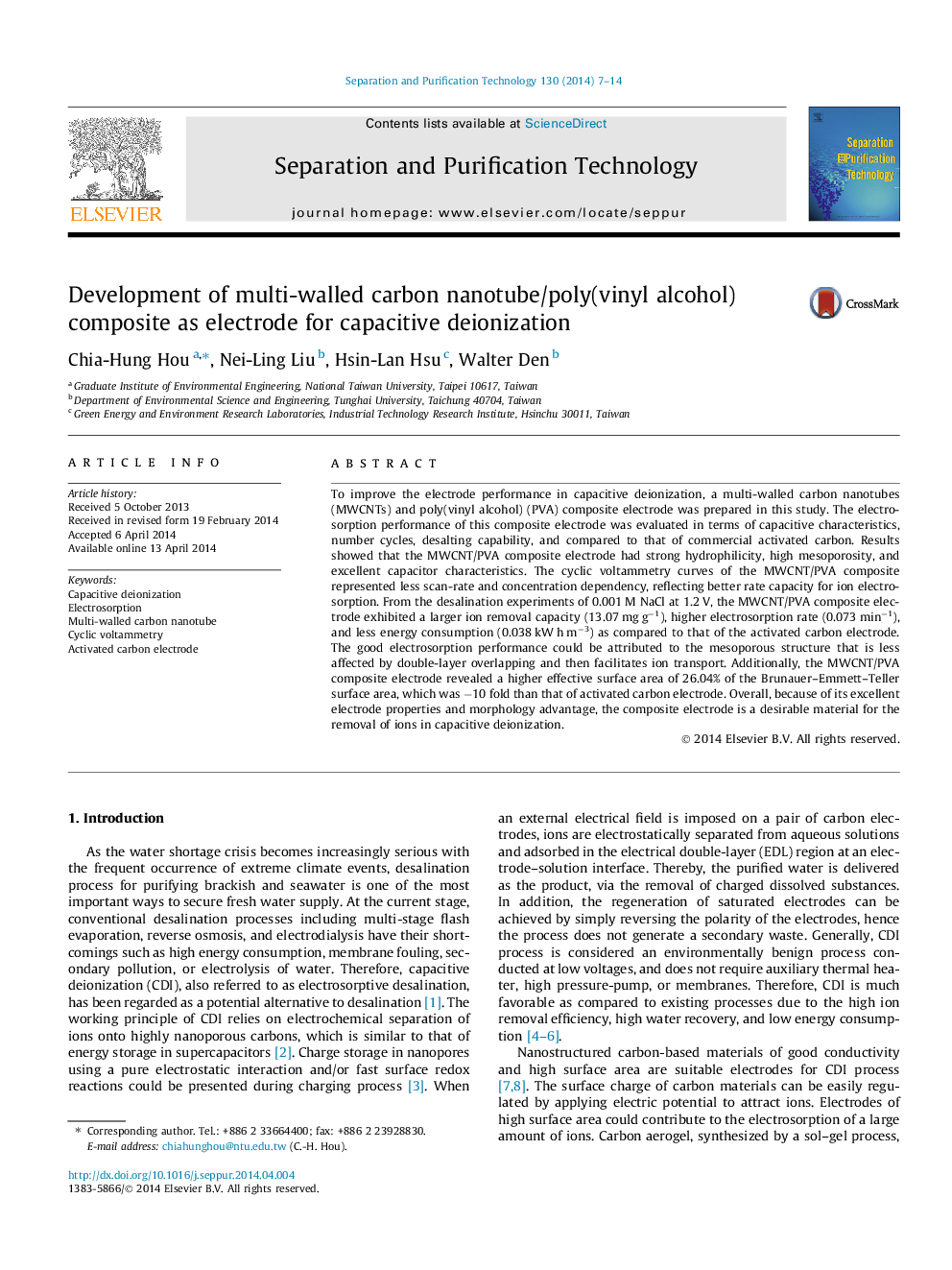| کد مقاله | کد نشریه | سال انتشار | مقاله انگلیسی | نسخه تمام متن |
|---|---|---|---|---|
| 641108 | 1456989 | 2014 | 8 صفحه PDF | دانلود رایگان |

• Multi-walled carbon nanotube-activated carbon composite electrode was prepared for capacitive deionization.
• Composite electrode had strong hydrophilicity, high mesoporosity, good capacitive properties, and great pore accessibility.
• The presence of mesopores could facilitate ion transport and provide more effective surface area for electrosorption of ions.
• Composite electrode exhibited better deionization performance than that of activated carbon.
To improve the electrode performance in capacitive deionization, a multi-walled carbon nanotubes (MWCNTs) and poly(vinyl alcohol) (PVA) composite electrode was prepared in this study. The electrosorption performance of this composite electrode was evaluated in terms of capacitive characteristics, number cycles, desalting capability, and compared to that of commercial activated carbon. Results showed that the MWCNT/PVA composite electrode had strong hydrophilicity, high mesoporosity, and excellent capacitor characteristics. The cyclic voltammetry curves of the MWCNT/PVA composite represented less scan-rate and concentration dependency, reflecting better rate capacity for ion electrosorption. From the desalination experiments of 0.001 M NaCl at 1.2 V, the MWCNT/PVA composite electrode exhibited a larger ion removal capacity (13.07 mg g−1), higher electrosorption rate (0.073 min−1), and less energy consumption (0.038 kW h m−3) as compared to that of the activated carbon electrode. The good electrosorption performance could be attributed to the mesoporous structure that is less affected by double-layer overlapping and then facilitates ion transport. Additionally, the MWCNT/PVA composite electrode revealed a higher effective surface area of 26.04% of the Brunauer–Emmett–Teller surface area, which was −10 fold than that of activated carbon electrode. Overall, because of its excellent electrode properties and morphology advantage, the composite electrode is a desirable material for the removal of ions in capacitive deionization.
Journal: Separation and Purification Technology - Volume 130, 10 June 2014, Pages 7–14